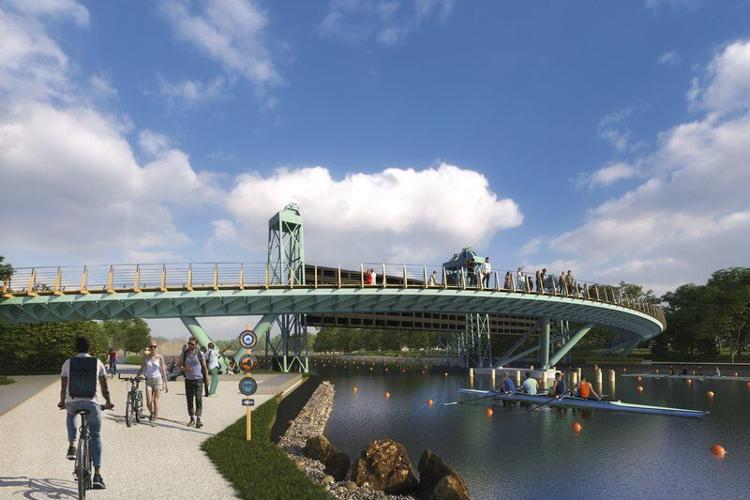By: William Bradseth, Emily Conn, and Marti Feyeraband

Owning a home on the shores of Lake Ontario is a blessing and a curse. The ability to watch serene blue waves gently ripple along the unimpeded horizon from the comfort of your home creates a tranquility that many desire. Although the water is what attracts people to this location, it’s also what puts them at risk for problems such as flooding and property damage. These are issues all lakeside residents can face but they continue to create frequent problems for those along Lake Ontario due to the erosion of the lakefront.
“As a boy in the 1960s and 70s, I recall about 20-30 feet of beach. Enough to pull a small boat up on… Now, we step off our access stairs into about knee deep or less depending on the time of year… Just [in] the last few years, we seem to have had a lot more rain on top of high lake levels causing damage to the front,” said lakeshore homeowner Bill Rowe.
Hamlin residents living along Lake Ontario experienced record levels of flooding in 2019. As homes were damaged and roads closed, waste from the septic tanks flowed into the lake and contaminated the waters. In order to protect Lake Ontario and the communities along it, Governor Andrew Cuomo created the Resiliency & Economic Development Initiative (REDI). Out of the $300 million budget to increase shoreline resiliency and boost lakeside economies, $43 million was allocated to Monroe County. The Town of Hamlin is using $7.9 million of those funds to install a new sewer system.
Cuomo announced REDI last May. Monroe County was one of eight counties asked to identify its needs in terms of infrastructure problems, concerns from locals and public safety. Old septic tanks topped the list of issues for the Town of Hamlin leading to the current work being done for the Lakeshore Sewer District.
“The goal of the project is to add sewers to the homes along the shoreline in the Town of Hamlin… [and] eliminate the accidental discharge of raw sewage into the lake from septic systems when flooding occurs,” said Hamlin Bookkeeper, Norman St. John.
A project of this magnitude will take time and cooperation among homeowners along the shore. The project recently launched and is still in its early stages of development. The first step involved informing residents of the town’s plans and timeline for the sewer system.

In February, two informational meetings were held that informed residents of the Lakeshore Sewer District. After presented with an overview of the project, the 300 to 400 residents involved were told it was their choice to hook up to the new sewer system and abandon their septic tanks. Although the project was created to benefit residents and their properties, the informational meetings prompted many questions from the public. In order to address citizens’ concerns, the Hamlin government recently posted answers to those frequently asked questions from both meetings on their website.
Despite holding the two informational meetings, the message didn’t reach all residents of the area since some of the homes aren’t lived in year-round and instead serve as summer cottages. Once made aware of the project, those who only use their lakeside property seasonally didn’t see a need to hook up to the sewer system.
“We don’t need it as we are a seasonal cottage and have no need for it. For us, I don’t see a value in sewer access,” said Rowe.
Despite Rowe’s decision not to hook up to the sewer system, he will still have to pay an annual $75 debt service fee. He worries about this additional cost since he won’t receive any benefit in return.
“This will cost us more money on a bond or taxes. They made us pay for a waterline that went down Newco Drive about 25 to 30 years ago regardless of if we hooked up to it. Same concern here,” said Rowe.
Homeowners who don’t hook up to the sewer system pay less than those who do. Residents who choose to hook up must cover the costs of abandoning their septic system, connecting to the grinder station, connecting the pump to electric, a $250 new user connection fee, the electric to run the system in their homes as well as the $75 annual debt service fee. Despite these costs, residents only contribute a small portion toward the overall project.
“The REDI grant covers 95% of the cost of the project. The residents are responsible for 5% of the cost,” said St. John.
According to Hamlin’s Consulting Engineer, J.P. Schepp, the benefits of hooking up outweigh the costs.
“I think it would be foolish to not engage in this project. If you have property there this only makes your property better, safer, and helps the environment by not discharging your private leach fields into flood waters and into the water. I don’t see a downside especially given that the state is helping so much financially to improve this,” said Schepp.
Although not all residents plan on hooking up to the sewer system, Schepp gathered that most of those who attended the informational meetings were receptive to the idea. The project is expected to be completed by 2022. Permits and designs created over the summer will take time to get approved, but the project must be completed within three years in order to utilize the grant money. While some residents are still weighing their options, Hamlin officials and engineers continue to work toward the Lakeshore Sewer District’s completion so Lake Ontario and its residents can be protected.






















Harlow t. Cushman • Mar 15, 2021 at 4:03 pm
I can see nothing but positive results from this project.